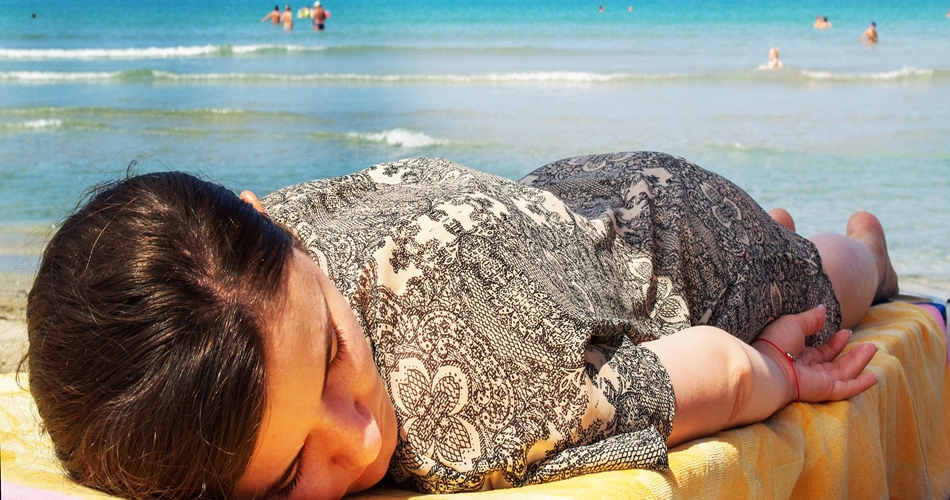To a large degree Daylight Saving Time is a European and North American complication, while parts of Oceania and South America have been forced to negotiate this method during Southern Hemisphere summers too.
Countries in Africa and Asia generally do not observe Daylight Saving Time, primarily because they cannot really justify it.
Daylight Savings and Sleep Routine
More than a century later, the madness that is Daylight Saving Time continues but there is a growing lobby actively campaigning against its implementation, with its impact on sleep patterns often being at the center of the argument.
It is already well established that Daylight Saving Time can disrupt things like travel, billing, record keeping, and even medical devices.
However, the extended argument over the impact Daylight Saving Time has on an individual’s overall health is what will likely bring the case home.
Although for reasons not necessarily related to sleep, it is also worth noting that the European Union just this year voted to remove Daylight Saving Time permanently. That was done purely for economic and trading reasons though.
The Origins of Daylight Saving Time
As is so often the case with modern concepts, Daylight Saving Time can be traced back to Europe. Many things came to an abrupt end for the German Empire, under the reign of Kaiser Wilhelm II.
However, a lasting legacy of his was the first implementation of Daylight Saving Time during World War I. Daylight Saving Time was implemented by the German Empire and Austria-Hungary for the first time on April 30, 1916, just over two years before Kaiser Wilhelm’s abdication.
About 74 countries around the world still use this time altering technique, where clocks are set forward by one hour (aka phase advance). It is under those circumstances that they switch from
Standard Time to Daylight Saving Time. That shift normally takes place in the spring or the summer.
When autumn and winter return, the clocks will then be shifted in the opposite direction (aka phase delay). That is a switch from Daylight Saving Time back to Standard Time.
More than 100 years later, the logic behind its implementation is being challenged with increasing regularity. Among those actively campaigning against the implementation of Daylight Saving Time are a couple of Michigan State researchers, who cite its impact on sleep and a reported increase in workplace injuries.
Does Daylight Saving Time Cut into Your Sleep?
When Christopher Barnes and David Wagner interrogated the relationship between Daylight Saving Time and workplace injuries, the link between the two might not have initially seemed obvious.
However, when you discover that the thrust of their argument actually centers on sleep efficiency and the quality of sleep individuals get under Daylight Saving Time, the muddied waters become a little clearer.
In case you hadn’t put two and two together yet, they definitely believe that Daylight Saving Time unnecessarily cuts into an individual’s sleep and has an adverse impact on his/her life and performance in the workplace.
They cut even deeper into this thread, by also examining the economic cost to the people of the United States, as a result of Daylight Saving Time and the impact that it has on sleep efficiency.
How to Manage Daylight Saving Time Changes
The Medical West Hospital has provided advice to those who struggle to make the adjustment both into and out of Daylight Saving Time.
Here is a list of meaningful things you can do, to compensate for any disruption to your sleep-wake cycle during the two Daylight Saving Time transitions.
1. Falling Back (Phase Delay)
The second transition is what we call the phase delay when the clocks switch backward again. It is also loosely referred to as falling back. They advise that ten days before falling back, you should attempt to fall asleep and wake up ten minutes later on each day.
You are essentially training your body to make the necessary adjustments before the time and clocks actually change. The opposite would hold true for the spring transition.
2. Daily Schedule
The clocks might change and the times might change but there is still an opportunity for you to manage and keep your schedule as close to what it usually is, despite entering Daylight Saving Time.
Granted, some activities will undergo mandatory changes. Those are uncontrollable.
However, try to establish which elements of your daily schedule and routine you can control, especially those which pertain to your sleep patterns. The same would apply to things like socializing, eating and even your exercise routines. There is no reason why those elements of your routine will not change.
3. Bedtime Routine
Try to the best of your ability, to stick to the bedtime routine that you have always adopted, despite the clocks changing. If you stick to that schedule, your body will likely always know when to sleep, regardless of the time changes.
More importantly, you should not resist the desire and need to sleep that comes with the territory when you adopt and stick to that bedtime schedule. Turn off the tv, put the phone away and switch off the lights.
4. No Napping
Avoid any temptation to fall asleep during the course of the day. Even a short daytime nap after a Daylight Saving Time transition can have a detrimental impact on your sleep at nighttime.
That will have a detrimental impact on your sleep-wake cycle in the short and long-term.
Daylight Saving Time, Manipulation of Already Functioning System
The natural order of things dictates that human sleep and activity cycles are determined by the 24-hr cycles of the earth’s rotation. For most of the year – and before the start of the 20th century – all human beings functioned perfectly well under these circumstances. It was the way of nature and thus it was good.
With the implementation of Daylight Saving Time, those sleep and activity cycles are disrupted at least twice during the course of the year. That is also a disruption to the forces of nature. The Michigan researchers are not the first to cite the problems that these presents though.
That is because the argument is loaded with logic. Time and time again, we have stated on these blog pages that sleep is important for the functionality of the brain. When you have a system, whether artificial or not, that cuts into the length and quality of the sleep that you get you can expect for there to be an adverse effect on the functionality of the brain.
By now, all of us already know that the circadian rhythm regulates sleep-wake cycles in human beings. That circadian rhythm essentially repeats itself every 24 hours. The human body and mind naturally adjust to that system or rhythm.
The whole premise behind Daylight Saving Time centers on making the most of daylight hours during the summer.
However, specialists in this field continue to remind us that human beings will always conform to a 24-hr sleep cycle, regardless of the daylight circumstances.
They seldom deviate from that, which calls into question the justifications for Daylight Saving Time.
Clock Changes Have an Impact on Sleep
The Michigan researchers remind everybody that the most prominent feature of Daylight Saving Time is the changing of the clocks, either forward or backward, twice a year. Over time, your body and mind become used to the normal clock system.
Looking at the clock, whether that be on the PC, your watch or your phone has become the natural thing to do when tracking time. However, when Daylight Saving Time measures are implemented, the individual mind is then forced into making an uncomfortable adjustment and more often than not it fails to make that adjustment.
There is compelling evidence on the impact this has, with something as simple as traveling between time zones. Also on these blog pages, we have written at length the impact that traveling between time zones has on sleep efficiency and sleep quality.
What we have also previously found is that those making a time advance (shifting the clocks forwards) are the ones who struggle most to make the adjustments needed for a night of quality sleep.
That is to say that those working on time delays or traveling backward in time make a slightly easier adjustment but neither adjustment is ideal. In both circumstances, it is inevitable that sleep will be lost.
The principle is similar to that applied for Daylight Saving Time. Changing the time on your clock might help you keep track during the day when Daylight Saving Time is implemented but it is ultimately not enough to trick your body and mind into adapting to that change.
Daylight Saving Time, Sleep and the Workplace
At the heart of the research conducted by Christopher Barnes and David Wagner was the desire to establish a link between Daylight Saving Time and injuries in the workplace. Some people might not buy into their arguments, because this is life and somebody always has to be contrary.
However, as an author in these blog pages, I have often encountered compelling evidence to suggest that the lack of sleep definitely has a negative impact on cognitive function. What people often take for granted is that sleep is a restorative process, more so than it is a reaction to feeling tired or merely needing to rest your head.
Sleeping efficiently is a critical component of your overall health and thus not something to be trifled with under any circumstances. It also stands to reason that if your cognitive function fails, you are likely to encounter injuries in the workplace.
The nature of those injuries is likely to range, depending on the workplace environment itself, the nature of the work and the demands that it puts on the body.
For example, if you are involved in intensive labor, you are likely to be in for a long and bruising day if you do not get sufficient sleep. You are unlikely to get sufficient sleep if you are a subject or victim of Daylight Saving Time.
Beyond injuries, there is also the small matter of work productivity to be taken into account. That too can have far-reaching consequences – ranging from employment security to mental stability.
There is nothing more crippling than believing you do not have the capacity to do your work. Let us take for example the prefrontal cortex. It is a part of the brain which helps individuals set and achieve certain goals.
It is there to help with the processing of information from other parts of the brain and helping the body react accordingly. It helps you focus, plan, coordinate, predict consequences and even assists with the management of your emotions. The latter is an underrated function.
There is compelling evidence to suggest that those who are sleep deprived – which we are certain you will be during periods of Daylight Saving Time – will see a decrease in the cerebral metabolic rate of the prefrontal cortex.
Proof That Daylight Saving Time, Sleep Deprivation and Workplace Injuries Are Linked
Sometimes it is not enough to just say it. Such is the nature of the human condition that people want compelling evidence of the link between Daylight Saving Time, Sleep and Injury. So, courtesy of the chaps from Michigan we shall give it to ya.
The first environment they investigated was that of the mining industry in the United States, which is probably as notorious as any. That is before we factor into the equation the complications that are presented by Daylight Saving Time.
At this juncture, it would also be prudent to point out that most American states observe Daylight Saving Time, which makes the findings of this particular study all the more relevant.
There are exceptions that make the rule though. They are in states that either have tropical latitudes or do not experience much difference in the amount of available daylight, whether that be in summer or winter.
For the past decade, Daylight Saving Time in the United States has started within the first two weeks of March and has subsequently ended within the first week of November.
Now, back to the mining industry in the United States, where the consequences of poor quality sleep can be severe, fatal even. Well, that applies to the mining industry all over the world really.
Between 1983 and 2006, just under 600 000 workers were injured in American mines. The scientists conducting the research had access to all kinds of data, ranging from date and time of the injury to the region in which that injury happened.
Basically all of the information that you would need to establish if there was any correlation between the mining injuries and the implementation of Daylight Saving Time.
The nature of the injuries incurred would also prove to be a compelling detail in the context of this study, which sought to establish if injuries worsened during the Daylight Saving Time period.
True to form, the number of injuries during the Daylight Saving Time advance days, increased by a whopping 5.7 percent. In addition to that, there was an increase in the number of workdays lost, due to those injuries, which suggests that the severity of the injuries also skyrocketed during the period under review. Make of that detail what you will.
The researchers conclude that at the heart of their findings is the very notion that sleep deprivation increases during periods of Daylight Saving Time, especially during phase advance.
Correlation does not necessarily mean causation but in this case, the two researchers from Michigan proved that it actually does, by conducting a second study…related to the first.
The key finding made there is that the majority of Americans spend about 40 minutes less sleeping during Daylight Saving Time periods. We suppose you could also question the methodology here if you are a skeptic.
When Daylight Saving Time Ends, You Don’t Really Gain Sleep
Anthony Komaroff is the editor of the Harvard Health Letter and is not convinced by the theory that the end of Daylight Saving Time – normally in the first week of November in the United States – actually makes a material difference to your sleep patterns.
Now, through the observations made by other industry professionals, we have already established that the impact of the phase advance is definitely greater than that of the phase delay.
As a brief reminder, the phase advance would be at the start of the Daylight Saving Time period, when the clocks are set forward by one hour – from Standard Time to Daylight Saving Time. The phase delay is when the clocks are set backward from Daylight Saving Time to Standard Time again.
There is a strong lobby advocating for the abolishment of Daylight Saving Time because of the perceived impact the clock switch has on sleep. The general sentiment is that Daylight Saving Time reduces both the length and quality of sleep.
Komaroff is now doing his best to debunk what he feels is a myth about the phase delay when the clock times switchback. He says people also tend to labor under the misapprehension that the falling back phase means an extra hour of sleep upon the return to Standard Time.
Throughout these blog pages, we make constant reference to sleep-wake cycles. The very sleep-wake cycles that are knocked off-kilter when Daylight Saving Time kicks in. We have previously noted that this is probably a reason why we actually see a sharp decrease in the quality of our sleep.
Likewise, during the phase delay, the sleep-wake cycle is also adversely affected. Komaroff explains that the sleep-wake cycle gets knocked off-kilter yet again during the phase delay, although the jury is out on whether the impact of that shift has similarly long-term effects to those experienced during the period of phase advance.
The Harvard doctor makes reference to sleep disruption that is likely to take place for a number of days but does not expand beyond that. The burning question, though, centers on whether that disruption to sleep during the early stages of phase delay has a long-term impact on your health.
Logic would suggest that any disruption to sleep would have an adverse impact on your health.
He cites two studies which reveal that there could be significant consequences for the disruption to the sleep-wake cycle during phase delay. Incidentally, one of those studies was conducted by a group of Michigan researchers. Daylight Saving Time really must be a burning issue in that part of the world.
The Swedish researchers explain that about 1.5 billion people are exposed to Daylight Saving Time consequences during the course of the year. They also cite the impact that this has on the duration and quality of sleep.
The most glaring finding they make though is that heart problems can actually increase as a result of the disruption to the natural sleep-wake cycle. Both sets of researchers cite what they believe is a slight increase in the number of heart attacks because of these Daylight Saving Time shifts. Even though the correlation is not always causation.
Daylight Saving Time – Impact on Morning and Evening Types
Experts reveal that those worst affected by the Daylight Saving Time transition in autumn, are people who would be classified as the “morning types”.
In addition, they also reveal that those who are worst affected by the spring transition are people who would ordinarily fall into the “evening types” category.
Morning Types
These are people who prefer to take part in morning activities. When you reflect upon it, it is actually a rather strange reality to be faced with, given that the autumn transition is normally associated with one more hour of light in the mornings.
Evening Types
Are people who prefer to take part in evening activities. That Daylight Saving Time has a significant impact on them in the spring probably makes a little more sense, given the long exposure to light in the evenings.
Like so many researchers before them, those conducting these studies point out that night-time sleep and daytime rest-activity cycles are adversely affected by the two Daylight Saving Time transitions during the course of the year, especially for those with mood and sleep disorders.
Final Thoughts – Daylight Savings and Your Sleep Routine
Wow! What a bucket load of information.
Quick Takeaways
- Be kind to yourself and do not stress about the change in the 2 times changes. Read this article, I wrote, if you want to alleviate any stress you may have about not sleeping.
- We all should follow at least very loosely some sort of Sleep Routine to get the most sleep we can. If you stick to this with slight adjustments such as getting up and going to bed a little earlier your body clock will adjust within a couple of days.
My Sleep Hygiene Checklist can help you with instigating a great Sleep Routine – it is always in your best interest to get the optimum sleep you can – every day…
As always here’s to better sleep!




